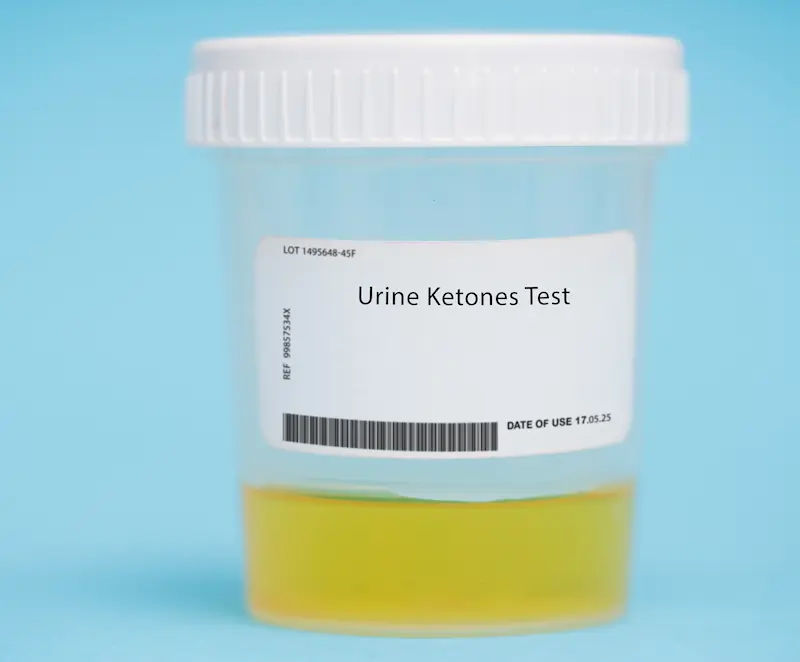Dengue, Chikungunya, Malaria Comparison: All You Need To Know
Discover the key differences between Dengue, Chikungunya, and Malaria in this comprehensive guide. Learn about symptoms, transmission methods, prevention tips, and treatment options to stay informed and protect yourself from these common mosquito-borne diseases.

Written by Dr.Sonia Bhatt
Last updated on 3rd Jul, 2025
.webp?tr=q-80,f-webp,w-350,dpr-2,c-at_max 700w)
Dengue, malaria, and chikungunya are diseases transmitted by mosquitoes, primarily affecting populations in tropical and subtropical regions. The hot and humid climates in these areas contribute to the prevalence of these illnesses, especially in places where sanitation is lacking. Stagnant water and inadequate sewage management are key factors in the increased mosquito populations found in underdeveloped areas. While these diseases have distinct characteristics, some symptoms can be similar, making it important to differentiate between them.
Transmission of Dengue, Chikungunya, and Malaria
Mosquito-borne diseases are a major health concern in many regions worldwide and each of these illnesses is spread by specific types of mosquitoes, leading to a variety of symptoms that can range from mild to severe. Understanding how these diseases are transmitted is essential for effective prevention strategies.
1. Dengue:
Dengue is mainly spread by Aedes aegypti mosquitoes, which are most active during the day. The disease is associated with four different viruses (DEN-1, DEN-2, DEN-3, and DEN-4). Symptoms can vary, including mild cases with high fever and joint pain, or severe forms that may result in haemorrhagic fever, which can be life-threatening without proper treatment.
2. Chikungunya:
Chikungunya is transmitted by Aedes mosquitoes, especially Aedes aegypti. This illness is marked by severe joint pain that can cause affected individuals to adopt a stooped posture. While it shares transmission pathways with dengue, chikungunya often leads to prolonged debilitating symptoms.
3. Malaria:
Malaria is spread by female Anopheles mosquitoes that carry the Plasmodium parasite. In contrast to dengue and chikungunya, Anopheles mosquitoes are primarily active at night. The symptoms of malaria can range from mild to severe, and diagnosis typically involves a blood smear test to detect the parasite.
Symptoms of Dengue, Chikungunya, and Malaria
Dengue, chikungunya, and malaria present various symptoms, often overlapping in their early stages. Identifying these symptoms is critical for timely diagnosis and treatment.
1. Dengue
Dengue can exhibit a range of symptoms, varying in severity. Early detection is vital for effective management. Typical symptoms include:
Severe headache
Pain behind the eyes
Muscle and joint pain
Nausea
Vomiting
Swollen glands
Rash
In more serious cases, symptoms may escalate to:
Intense abdominal pain
Persistent vomiting
Rapid breathing
Bleeding gums
Extreme fatigue
Restlessness
Blood in vomit
2. Chikungunya
Chikungunya often starts abruptly with fever and joint pain. Recognising these signs can facilitate timely care. Important symptoms to watch for include:
High fever, potentially reaching 104°F and lasting up to two days
Viral rashes on the body or limbs
Joint pain affecting multiple areas, often leading to a stooped posture
Headache
Loss of appetite
3. Malaria
Malaria typically appears 10 to 15 days after a mosquito bite, with symptoms that can vary in intensity. Awareness of these signs is essential for prompt intervention. Symptoms may include:
Mild to severe fever
Anaemia
Breathing difficulties
Headache
Muscle aches
Chills
Nausea, vomiting, or diarrhoea
Jaundice
Abdominal pain
Fatigue
Diagnosis of Dengue, Chikungunya, and Malaria
Confirming the presence of the virus or parasite is essential for diagnosing dengue, malaria, and chikungunya. Early diagnosis is critical for effective treatment, as these diseases can rapidly worsen if not addressed.
1. Dengue: Diagnosis includes virological tests such as qualitative and quantitative PCR tests (RT-PCR) to detect dengue RNA, along with rapid tests for the dengue NS1 antigen, which provide results in about 20 minutes. Serological tests, like enzyme-linked immunosorbent assays (ELISA), identify Immunoglobulin M (IgM) and Immunoglobulin G (IgG) antibodies.
2. Chikungunya: Diagnosis may involve testing serum or plasma using PCR tests to detect viral nucleic acid and serological tests like ELISA to confirm the presence of IgM and IgG antibodies. IgM levels typically peak three to five weeks after infection and can be detected during the initial days of illness, necessitating both serological and virological testing within the first week.
3. Malaria: Diagnosis generally requires a blood test, which may include Polymerase Chain Reaction (PCR) to identify the nucleic acids of the parasite and its species, a Complete Blood Count (CBC) to check for anaemia and other infections, and serological tests to detect antibodies produced in response to the infection.
Treatment Options of Dengue, Chikungunya, and Malaria
Effective treatment strategies are vital for managing symptoms and preventing severe complications in dengue, malaria, and chikungunya:
1. Dengue: There is no specific antiviral treatment. Management focuses on alleviating symptoms through fluid intake, pain relief, and rest. Severe cases may necessitate hospitalisation and supportive care. Treatment depends on symptom severity, with common medications including fever reducers and pain relievers. Maintaining hydration is crucial, and patients should seek medical attention if warning signs arise.
2. Malaria: Antimalarial drugs are the primary treatment and may vary depending on the type of Plasmodium parasite involved. Prompt treatment is critical to avoid complications and fatalities. The approach considers the specific parasite, symptom severity, the patient's age, and any existing medical conditions.
3. Chikungunya: There is no targeted antiviral therapy; treatment primarily aims to relieve symptoms like joint pain using analgesics, hydration, and rest. Due to symptom overlap with dengue, patients in regions where both viruses are present should avoid aspirin or non-steroidal anti-inflammatory drugs (NSAIDs) until dengue is ruled out, as these can increase bleeding risk.
Prevention Strategies of Dengue, Chikungunya, and Malaria
Effectively preventing dengue, chikungunya, and malaria involves both individual actions and community initiatives aimed at reducing mosquito populations and minimising exposure to bites.
1. Dengue
Preventing dengue is crucial, as the disease can lead to severe health complications. Simple measures can significantly reduce the risk of mosquito breeding and bites.
Eliminate Breeding Sites: Remove standing water from containers such as buckets, barrels, pots, and saucers under potted plants to prevent mosquito breeding.
Use Mosquito Repellents: Apply repellents containing DEET, Picaridin, or oil of lemon eucalyptus to exposed skin.
Wear Protective Clothing: Dress in long sleeves, trousers, and socks when in areas where mosquitoes are prevalent.
Install Screens: Fit windows and doors with screens to prevent mosquitoes from entering your home.
2. Chikungunya
Prevention focuses on avoiding mosquito bites, particularly from Aedes mosquitoes, which are active during the day. Implementing protective measures can help reduce the risk of infection.
Utilise Air Conditioning or Mosquito Nets: To prevent bites, especially during the day when Aedes mosquitoes are most active, use air conditioning or sleep under mosquito nets.
Remove Water-Holding Containers: Like dengue prevention, eliminate any standing water around your home.
Wear Long Clothing: Reduce skin exposure by wearing long garments.
Community Initiatives: Engage in community-wide efforts to control mosquito populations, which can significantly lower the risk of chikungunya.
3. Malaria
Preventing malaria is essential, especially for those living in or travelling to high-risk areas. Effective strategies can help protect against this potentially life-threatening disease.
Sleep Under Treated Nets: Use insecticide-treated mosquito nets (ITNs) for effective protection against malaria.
Indoor Residual Spraying: Apply insecticides inside homes to reduce malaria transmission significantly.
Take Preventive Medication: For travellers to high-risk areas, prophylactic antimalarial drugs can help prevent infection.
Avoid Outdoor Activities During Peak Times: Limit outdoor activities at dusk and dawn when malaria-carrying mosquitoes are most active.
Complications and Long-Term Effects of Dengue, Chikungunya, and Malaria
Infections such as dengue, chikungunya, and malaria can lead to serious complications if not managed properly. Understanding the potential health issues that can arise is essential for timely intervention and effective treatment.
1. Dengue
Dengue can result in a range of severe complications, especially in its more serious forms. These complications can impact multiple organ systems and may require urgent medical attention.
Seizures
Brain injury
Blood clots
Damage to the lungs and liver
Heart issues
Pneumonia
Injury to blood vessels
2. Chikungunya
Chikungunya is primarily known for causing debilitating joint pain, but it can also lead to various other complications. These effects can significantly impact a person's quality of life and may persist long after the initial infection has resolved.
Severe and lasting joint pain
General weakness
Eye-related issues
Neurological complications
Cardiac concerns
Deformities of the joints
3. Malaria
Malaria can cause a wide range of complications, some of which can be life-threatening if not addressed promptly. The severity of symptoms often depends on the specific type of Plasmodium parasite involved and the individual’s overall health.
Anaemia
Cerebral malaria
Jaundice
Liver failure
Sudden drops in blood pressure (shock)
Fluid build-up in the lungs
Kidney failure
Rupture of the spleen
Dehydration
Pulmonary oedema
Acute renal failure
Seizures
Recognising these complications can help ensure timely intervention and improve management of each condition.
Conclusion
Dengue and chikungunya are viral infections transmitted by the same mosquito species, while malaria is caused by a parasite. Despite sharing symptoms like fever and joint pain, they require different treatments. Malaria can be treated with medications like chloroquine, but there are no specific treatments for dengue and chikungunya, which are typically managed with pain relief and supportive care. While these diseases may seem common, they can lead to serious complications, making prevention vital for health safety.
Preventing these diseases involves avoiding mosquito bites and eliminating breeding sites, which can significantly reduce infection rates. If you suspect an infection, consulting a healthcare professional is crucial.
Consult Top General Physician
Consult Top General Physician

Dr. Ashok M L
General Physician/ Internal Medicine Specialist
24 Years • MD Med.
Bengaluru
Apollo Hospitals Jayanagar, Bengaluru
(75+ Patients)

Dr. Lakshmi Sanjitha Kakani
General Physician/ Internal Medicine Specialist
6 Years • MBBS, MD (General Medicine)
Visakhapatnam
Apollo 24|7 Clinic - Andhra Pradesh, Visakhapatnam

Dr Summaiya Banu
General Practitioner
8 Years • MBBS
Hyderabad
Apollo 24|7 Clinic, Hyderabad
(225+ Patients)

Dr. Chethan T L
General Physician/ Internal Medicine Specialist
5 Years • MBBS, MD, DNB (General Medicine)
Bengaluru
Apollo Medical Center, Marathahalli, Bengaluru

Dr. Rajib Ghose
General Physician/ Internal Medicine Specialist
25 Years • MBBS
East Midnapore
VIVEKANANDA SEBA SADAN, East Midnapore




